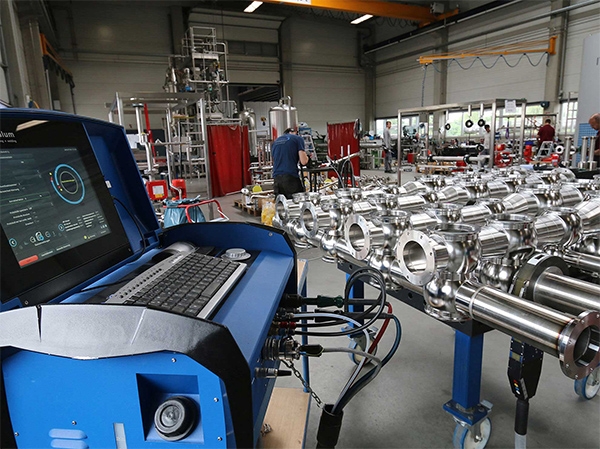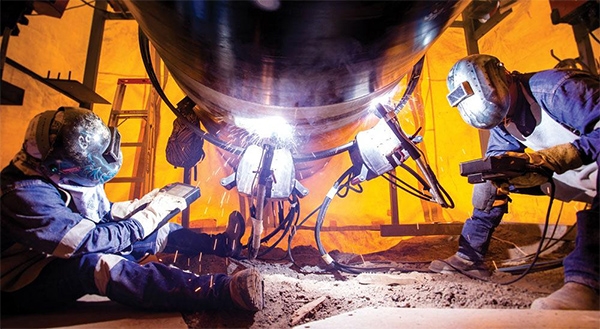Learn the application of Orbital welding technology
orbital welding allows you to weld pipes or connectors with high precision and the resulting weld surface to a high gloss and flatness by orbital gtaw welding. so what industries is this technology applied to? join swiss tech schreine to learn the application of orbital welding technology in the following article.
what is orbital welding technology?
the application orbital welding technology is mainly used in the semiconductor, food and pharmaceutical industries and industries involving toxic and highly permeable gases.
unlike tig, mig and rod welding machines, automatic welding will be fully automated. that is, there is no need for a welder to directly participate in the welding process, but the machine will automatically do it. welders only need to set initial working parameters and monitor the working process of the machine to ensure the best results.
structure and principle of orbital welding machine
automatic orbital welding is composed of four main parts: the welding body, the welding head, the welding gas supply table and the mounting part.
orbital welding machine also works on the principle of a molten electric arc, which is generated by the electrode and the lower solder. a protective layer of medicine to avoid the penetration of oxidizing agents, making the welds white and beautiful.
it has high productivity, specialized for straight welding. curved welding is also possible, but depending on the type of machine, for example, an automatic welding vehicle can only weld straight, and a welding robot can also perform welds with complex shapes such as round pipe welding, perpendicular welding, etc.
it can weld a variety of different metals, but depending on the type of welding machine.
application of orbital welding technology
orbital welding in the semiconductor industry
since the early 1980s, automatic orbital gtaw welding has been used to join high purity gas handling and distribution pipelines in the semiconductor and related industries.
a semiconductor fabrication facility houses kilometers of stainless processing lines that transport the gases used in chip production. these gases can be very toxic and highly corrosive. the required level of weld integrity is achieved only by orbital gtaw welding. most semiconductor soldering is done using.
the soldering tip completely envelops the joint, ensuring superior gas coverage and minimizing any oxidation to the weld. wall thicknesses and tube materials often allow fusion welding to be performed in a single pass without the need for additional wires.
the introduction of the semi f 78-0304 standard in the early 1990s provided a comprehensive guide to the use of gtaw orbital by professional contractors.
automatic welding for the food industry
mainly used on stainless steel lines used in the production, processing and distribution of food, dairy and beverage products. orbital welding technology provides welds on stainless steel lines in compliance with the highest standards of food safety.
broadly defined as a high purity or hygienic weld. applications in the food, dairy and beverage industries specify smooth and durable orbital welds, internal as well as external. , so as not to trap microscopic particles that can contribute to microbial contamination leading to food consumption sickness.
the laboratory uses automatic welding machines
toxic gases in the laboratory must not be leaked to the outside, affecting the health of the operator. the fact that the analyzers are not contaminated from conventional installations also causes the need to use automatic welding.
hopefully through the above article you have understood the application of orbital welding technology. you can refer to other related articles at our website swisstech.com.



